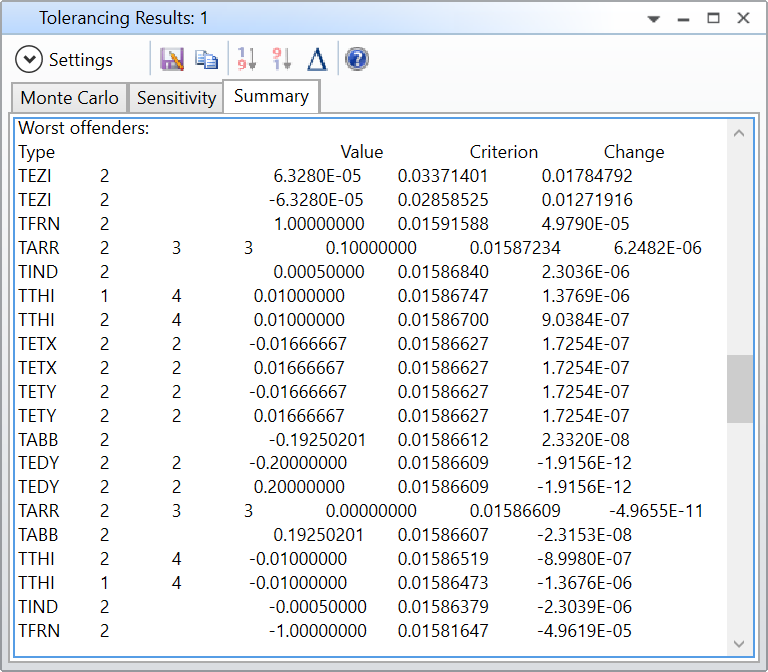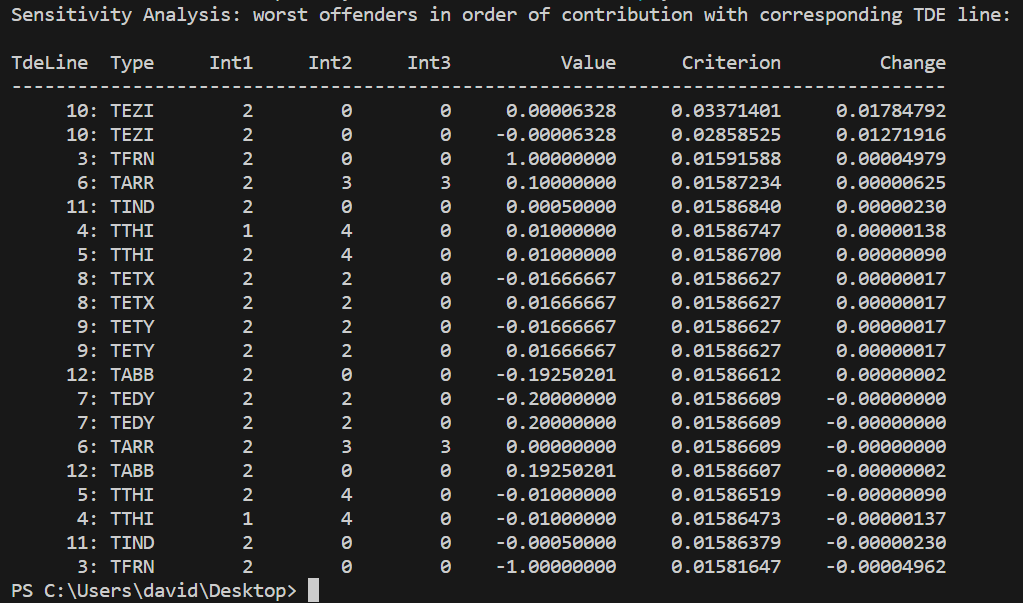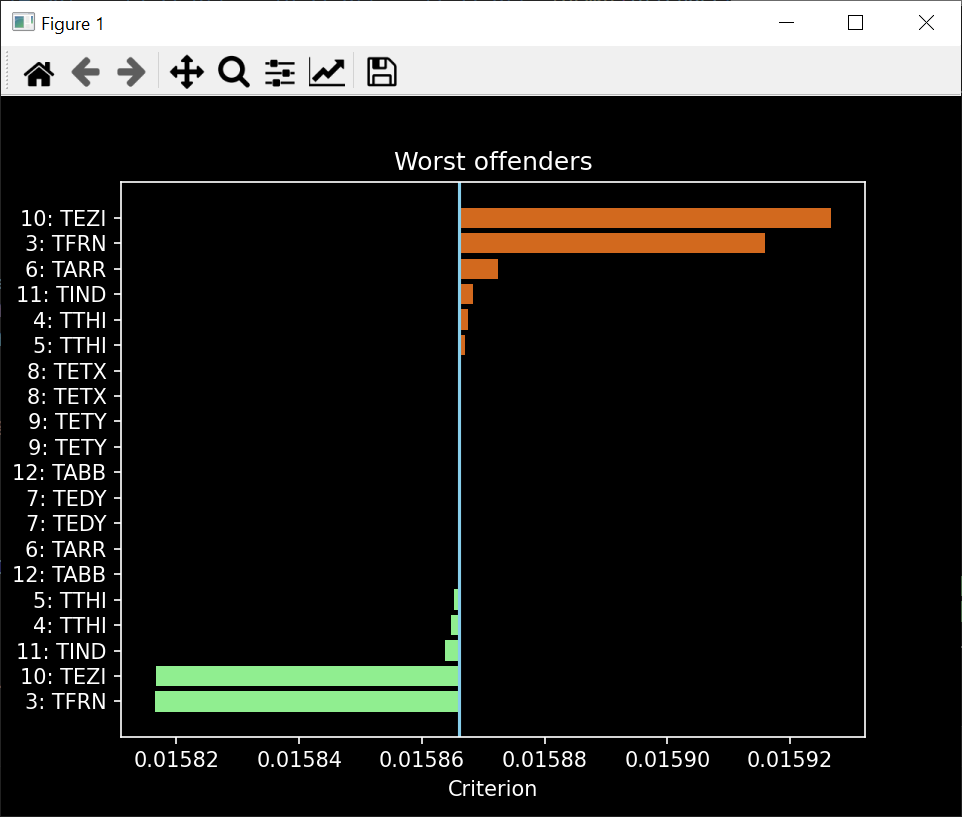When reviewing the results of tolerancing, it would be SO much more convenient if the tolerance editor line numbers were part of the listings. I have 200+ tolerance operands and I’m wasting a lot of time scrolling down the Worst Offenders and trying to find them in the editor so I can modify them. Please add?
Enter your E-mail address. We'll send you an e-mail with instructions to reset your password.










